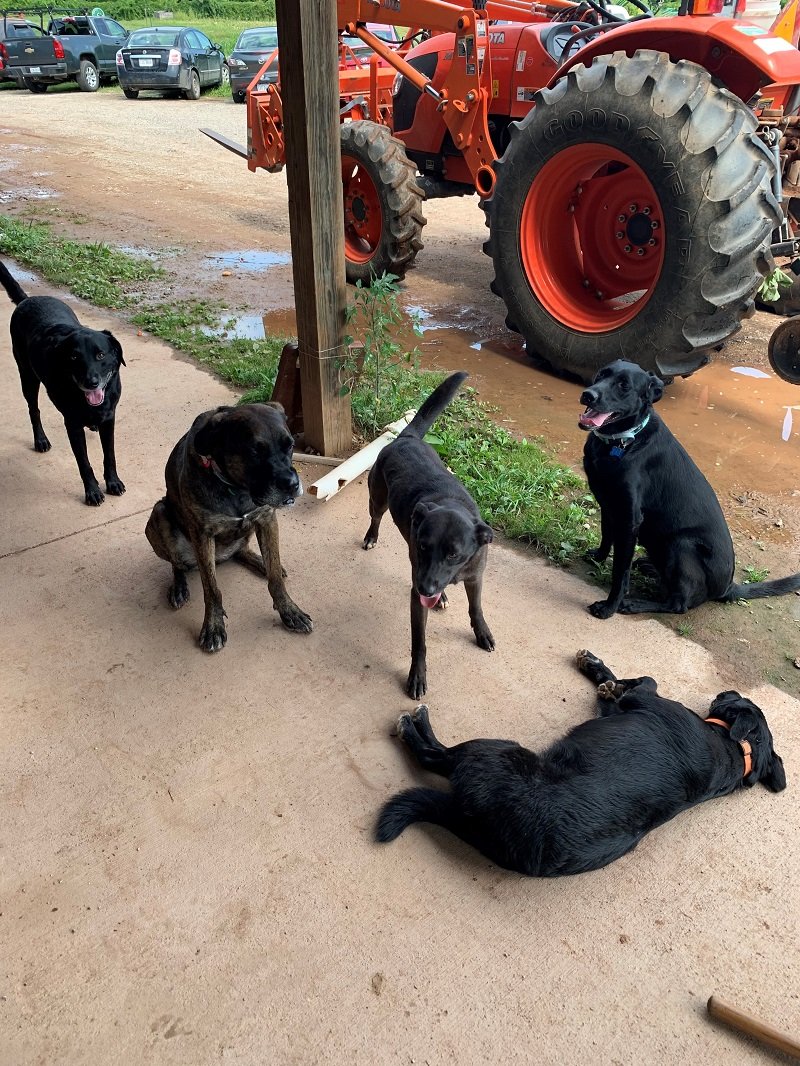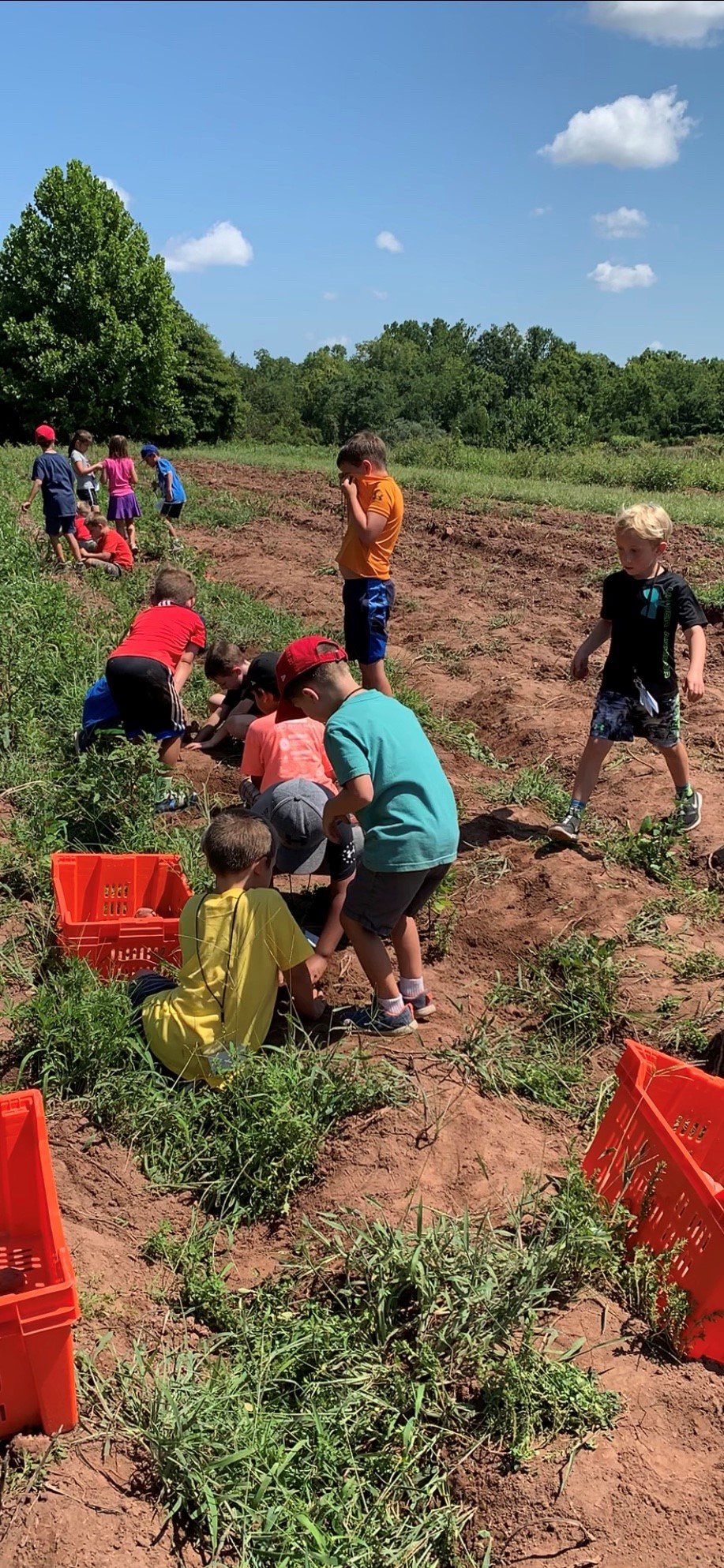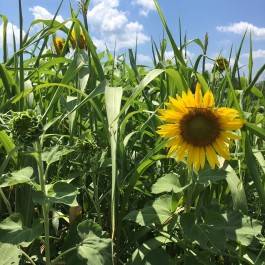Veggies are amazing (and some are even beautiful) but nothing competes with a sunflower for outright cheer. Have you seen these little ladies nodding their yellow heads as you pass on Route 50 or Everfield Drive? We don't often share photos or tell stories about the Grant Farm because the Grange is our hub, where our offices, equipment, tractors, and refrigeration reside. As our Farm-ily grows, however, the extra acreage in the Grant has become fertile ground for dreams of the future.
To grow more, and grow as a Farm, we will need to actively cultivate all of our space. This season, the Grant is slowly filling with sunflowers, sorghum, and field peas. No, you won't be seeing any of those in your CSA shares. These are cover crops: a farmer's best friend for enriching soil, halting weed growth, and preparing for the future. Cover crops also reduce our dependence on herbicides and fertilizers. In short, they are unsung heroes.
We think of air primarily as oxygen, when it's actually a nitrogen-based mixture of many gases. Plants excrete oxygen, but it's nitrogen they need to thrive. The nitrogen in the air is less useful to a plant, however, than nitrogen in the soil. Read the packaging of your garden fertilizer and you'll see what I mean! Because we farm organically, we're restricted from applying certain types of products and we rely on cover crops instead. The biomass (or leftover plant material) from cover crops deposits a rich layer of nitrogen into the soil at the end of their season. Their biomass and root structures both serve to lighten the density and increase the water retention capacity of the soil for the next round of planting. During their lifetimes, cover crops like sunflowers scavenge the available nutrients from deep layers of soil, pulling them upwards and within reach for the food crops that follow.
The field peas growing alongside our sunflowers are legumes that have been specifically inoculated with a particular strain of bacteria that boosts their nitrogen superpowers. Yes, that's right, we planted bacteria with those peas! The bacteria and the peas have a mutually beneficial relationship that together gathers nitrogen from the air and incorporates it into the soil. This microbiome, or group of co-exisitng organisms, is the difference between dirt and soil.
Cover crops don't just feed the soil; they are weed warriors. We choose them because they out-compete weeds, cutting them off from sunlight and water before they can propagate. This reduces the weed seed bank season after season, letting us direct our labor to endeavors other than perpetually battling spiny amaranth.
If you take a summer drive near the Grant Farm, you may not see us in the fields or riding tractors. You may not recognize food growing inside the fencing. You may stop to admire the sunflowers as they bloom, but remember, they are farmers too. In our absence, the cover crops tend to the soil below, readying it to feed you one day soon.
Eat well today and be well always,
Ashley, Collin, John, Rory, Nate, James, Lex, Alexandra, Michelle, Julia, the Black Dog Squad, the Happy Hens, and the Hard-Working Sunflowers




